Interspecific relations in the ecosystems of the "perico sector", Palmira abajo hamlet, Andrés E. Blanco municipality, Lara State.
hive-148441·@aliriera·
0.000 HBDInterspecific relations in the ecosystems of the "perico sector", Palmira abajo hamlet, Andrés E. Blanco municipality, Lara State.
Warm regards to all members of the prestigious HIVE community, especially to the creators of content in the area of Biological Sciences. # The permanent interaction between the individuals that occupy an ecosystem is one of the most striking factors in nature, because it allows each individual to adapt to the living circumstances present in its environment, generating an upward movement of energy and biomass, the reproduction of individuals and thus the perpetuation of the species, which is the ultimate goal of any ecological population. #  Small winged insects gather on a flower of a curcubitacea to feed or protect themselves from the environment, indirectly participating in the pollination of the flower (Mutualism-type symbiosis). # During a walk through the "perico sector", belonging to the Palmira Abajo hamlet , geographical coordinates: 9.748328,-69.668810, I found several real models of ecological relationships between individuals of different species, including plants with plants, plants with animals, fungi with plants and animals with animals, covering a wide range of possibilities within the natural world, which I refer to in images that I was able to capture with my cellular equipment: #  Partial view of the "perico sector", Palmira Abajo hamlet. # 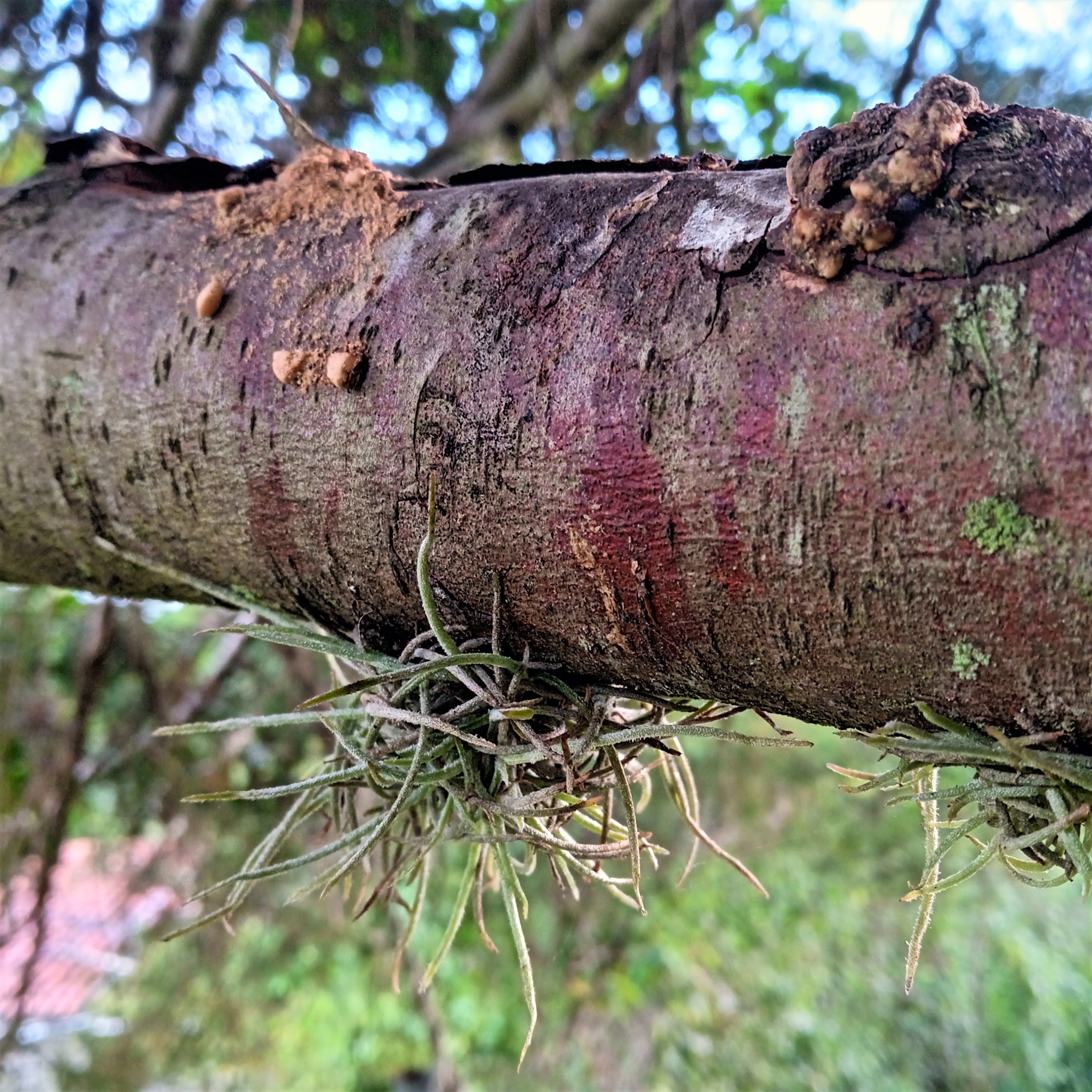.jpg) Bromeliads and lichens growing on the trunk of a conifer (Parasitism). # .jpg) Sheep feed on a wild grass, contributing their droppings to the substrate (mutualism). #  Red ants, genus Atax, feeding on the tissues of a mango fruit, Manguifera indica (Herbivory). # Let us look at other cases: # 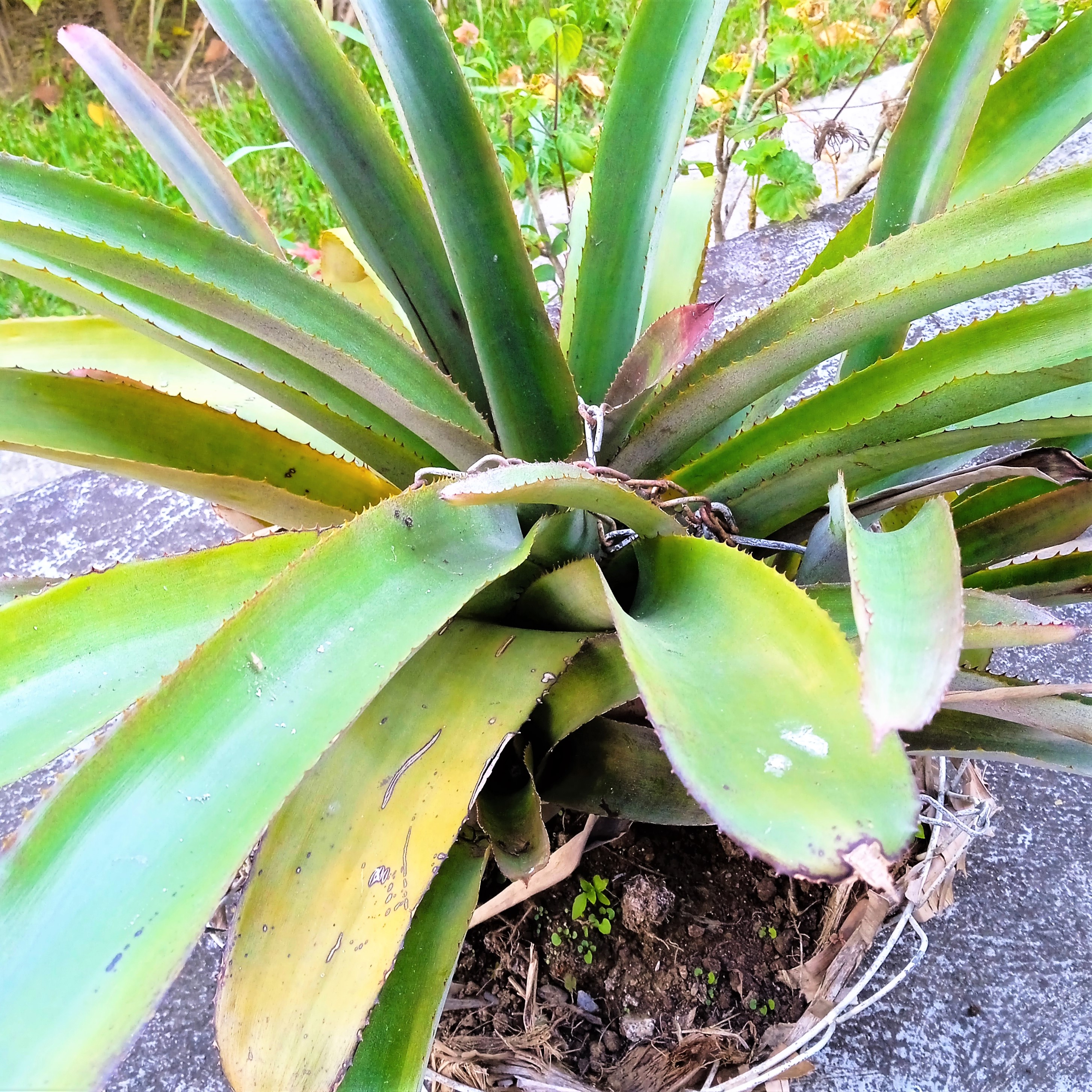.jpg) A plant of the Family Bromeliaceae, growing in a pendant pot. # I found a plant of the Bromeliaceae Family growing in a pendant pot, observing that between the base of its leaves small pools of rainwater are formed, in which there are countless aquatic microorganisms and the most colorful, a couple of frogs, probably of the genus Hypsiboas, which have made that Bromeliad their habitat, especially to sleep and reproduce, raising their tadpoles in the water accumulated in the basal rosette of the long leaves of the Bromeliad. This interspecific relationship is known as mutualistic symbiosis, since the frogs and microorganisms benefit from having a safe habitat and the plant receives the animals' excrement. #  On the right, in the basal rosette of the bromeliad plant, a small pool was formed with rainwater. On the left is a sleeping frog, Hypsiboas crepitans (mutualism). #  On the right, another frog appeared of darker color, of the same species Hypsiboas crepitans (mutualism). # While walking through a small orchard planted with chili bell pepper plants, I observed a rotting in some fruits of this crop, caused by the infestation of a fungus, whose hyphae and blackish spores become visible as they consume these plant tissues, causing total loss. # 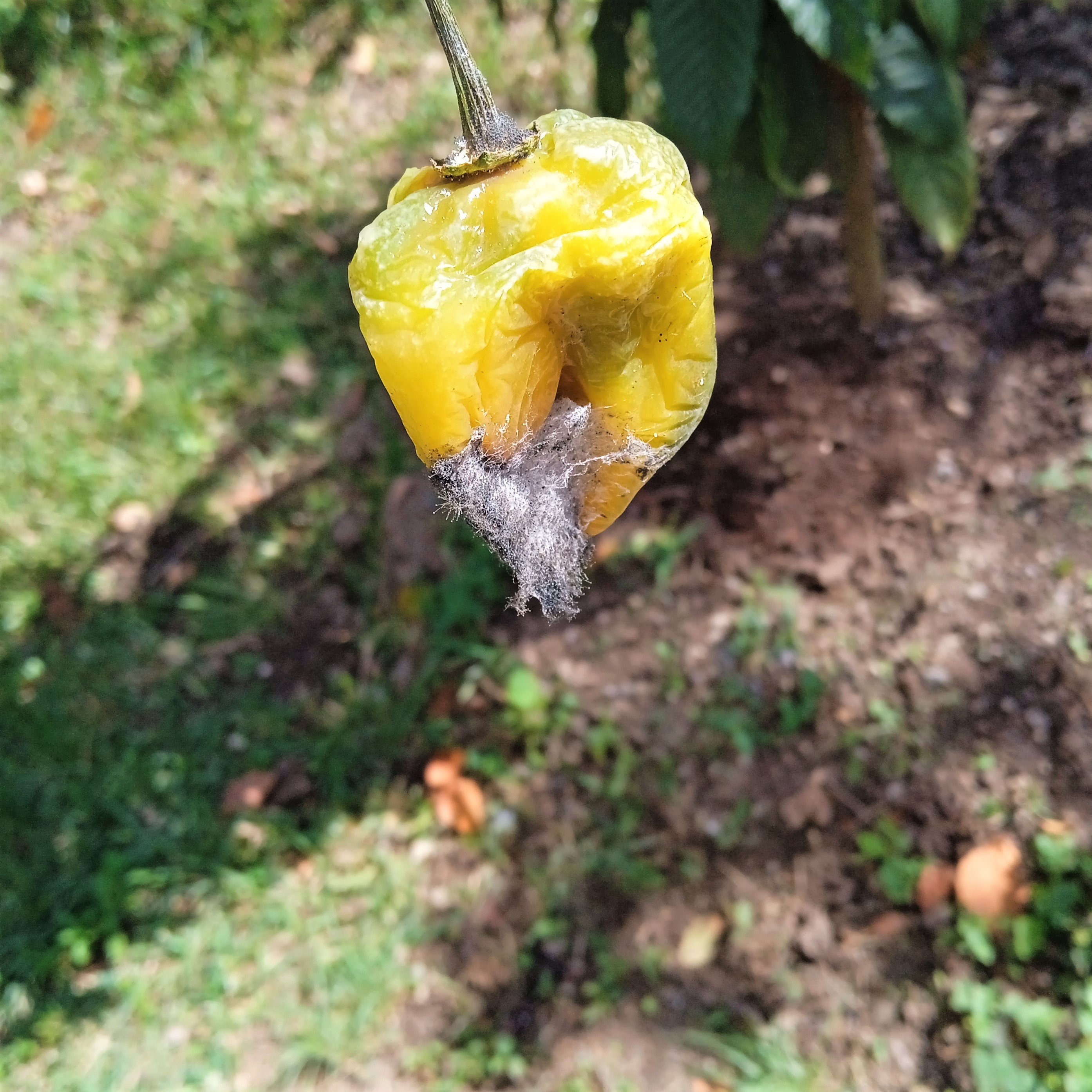.jpg) The spores of this filamentous fungus invade and parasitize the plant tissues of the chili bell pepper fruit. # The relationship is one of evident parasitism, since the plant is harmed by the loss of its food reserves and the decrease in the reproductive capacity of its seeds, while the fungus, probably rizophus nigricans, benefits by feeding on the plant tissues of the fruit. #  As the fungus fructifies, it forms a black or gray dust containing spores that can be carried by the wind. #  The damage caused by the parasitic fungus extends to other fruits with different levels of ripening. # I was also able to observe the devastating effect generated by the fungi on the peduncle that supports the fruit of avocado plants, causing the fruit to fall prematurely, harming farmers by the inherent economic losses during harvest and the plant, by interrupting the possibility of the seed to ripen and germinate, giving rise to a new living being (parasitism). # 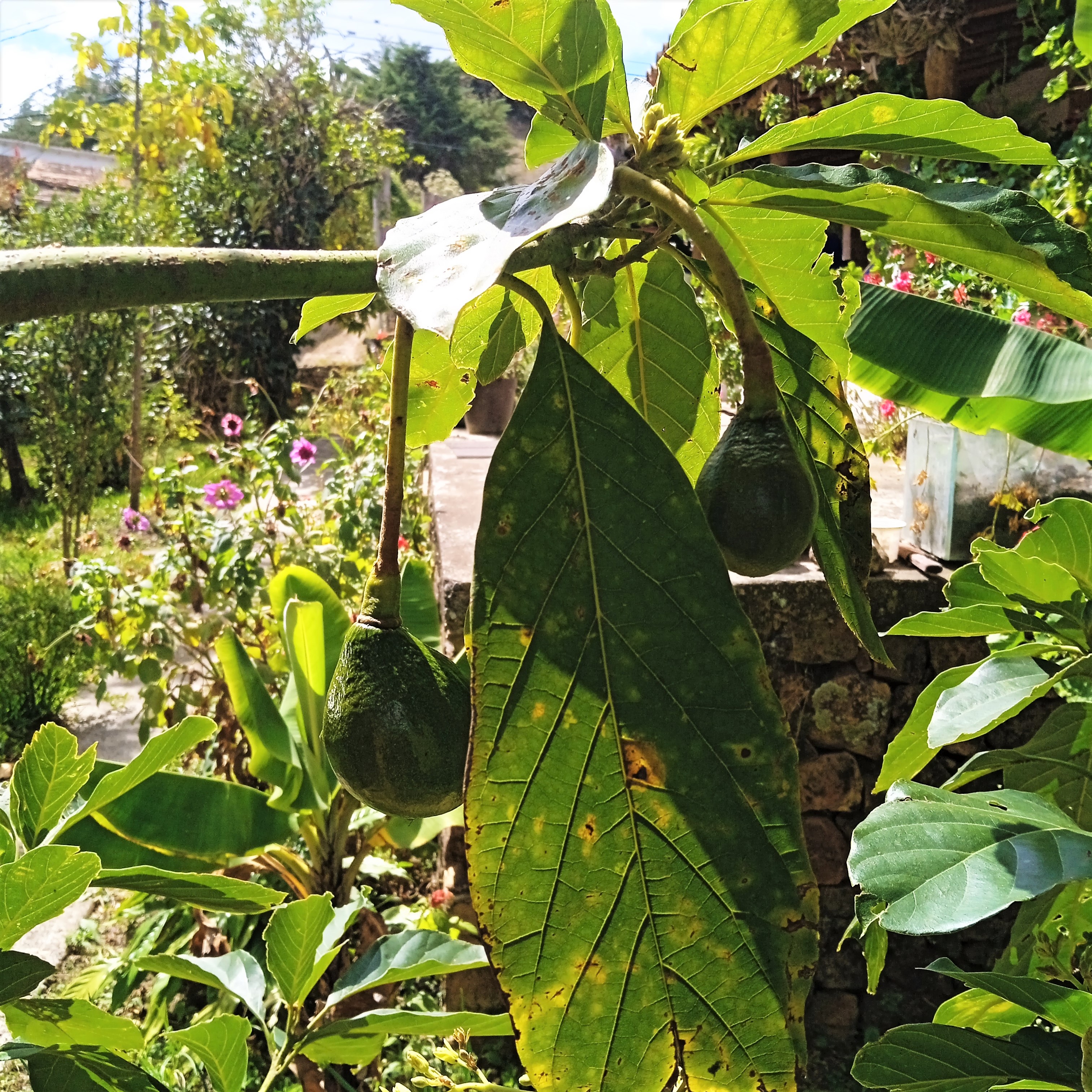.jpg) Avocado plant (Persea americana), showing two young fruits hanging from a long peduncle. Note the affectation of some leaves by a parasite. #  A young avocado, showing a fungal rot on the outer shell that caused it to detach from the peduncle. #  The vascular bundles were also attacked by the parasitic fungus, interrupting the passage of nutrients to the fruit cells. #  Despite being a very young avocado, the internal structure of the avocado was already fully developed. It only needed to grow. # As I walked through the "perico sector" of the Palmira hamlet below, I found beautiful inflorescences of a plant of the Asteraceae Family, Genus Dhalia, being visited by black insects of the Apidae Family, feeding of the pollen and nectar of this plant. # 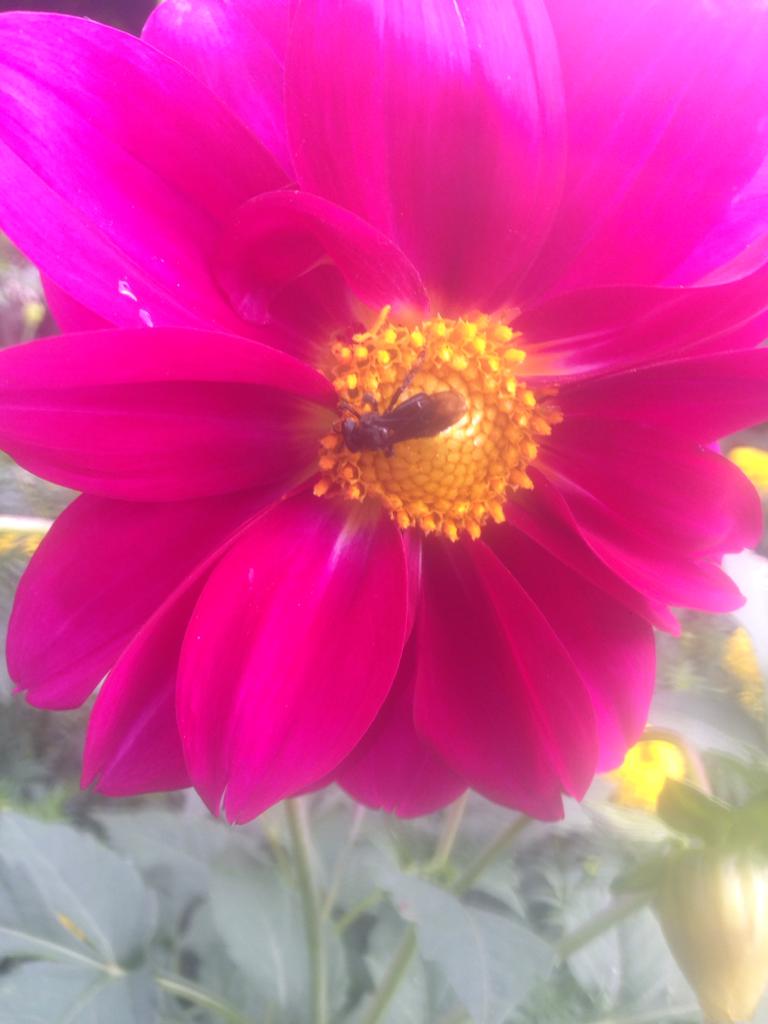 A meliponi bee of the Apidae family feeds on the pollen of an inflorescence of a plant of the genus Dhalia. # The plant provides nutrients to the insect and the insect provides pollination, direct or cross-pollination, which allows the plant to reproduce and improve its genetic strength through recombination with the pollen of other plants (mutualism). # <center>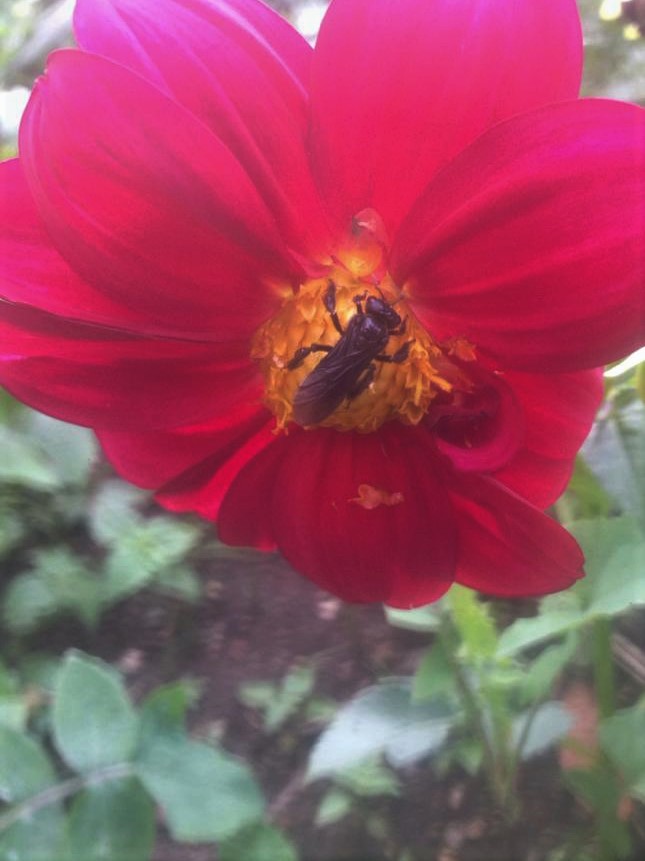</center> This insect occupies the entire space of the flowers of the disk and the radius of the Asteraceae, which increases the likelihood that it will be impregnated with pollen and then carry it to another flower. # Insect visits were also visible on the flowers of a guava plant (Psidium guajava). #  In this inter-specific relationship, the insect receives food and the plant is helped by the pollination of its flowers (mutualistic symbiosis). # Further on, in the same " perico sector ", I found a meliponi bee of the Apidae family, feeding on the flower bud of a rose bush (predation). #  Meliponi bees easily bore through the bark of trees, including stems, branches, leaves, flowers and fruits, damaging plants (predatory herbivory). # So are the interspecific ecological relationships between the different species that make up the ecosystems present in the "perico sector" of the Palmira Abajo hamlet. # <center>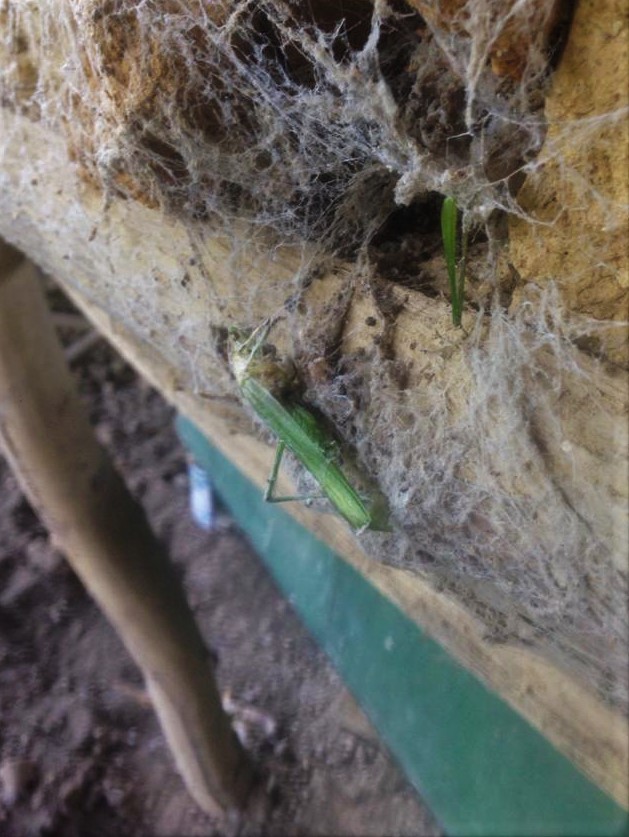</center> A cricket that fell into a spider's web (predation) # I invite you to analyze other cases that you find in your gardens and homes. # Suggested bibliography: # Ecological relationships [SOURCE](https://es.khanacademy.org/science/high-school-biology/hs-ecology/hs-ecological-relationships/a/hs-ecological-relationships-review#:~:text=Relaciones%20ecol%C3%B3gicas-,Las%20poblaciones%20de%20todas%20las%20diferentes%20especies%20que%20viven%20juntas,especies%20se%20llaman%20interacciones%20interespec%C3%ADficas.) # Interspecific and Intraspecific Relationships [SOURCE](https://e1.portalacademico.cch.unam.mx/alumno/biologia2/unidad2/relacionesComunidad/interespecificas) # Thank you very much for visiting my blog. # Ali Riera All pictures were taken with a xiaomi redmi 9c cell phone and are property of @aliriera.
👍 rant85, franciscopr, thranax, helcim, bert0, memeteca, tresor, fatman, bnk, eturnerx-dbuzz, hive-data, ebersaubot1, mangou007, egistar, solar-anamnesis,